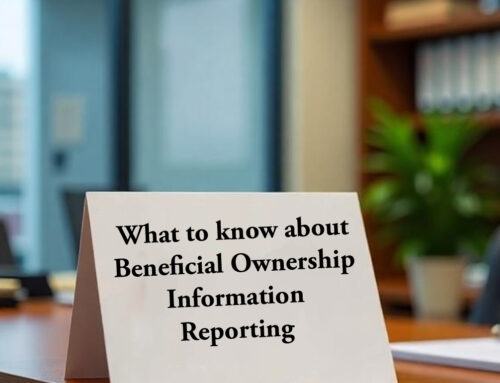Planning what to do in case of a disaster is an important part of being prepared. The Internal Revenue Service encourages taxpayers to safeguard their records. Some simple steps can help taxpayers and businesses protect financial and tax records in case of disasters.

Listed below are tips for individuals and businesses on preparing for a disaster.
- Preparing for Disasters (Video)
Take Advantage of Paperless Recordkeeping for Financial and Tax Records
Many people receive bank statements and documents by e-mail. This method is an outstanding way to secure financial records. Important tax records such as W-2s, tax returns and other paper documents can be scanned onto an electronic format.
Be sure you back up your electronic files and store them in a safe place. Making duplicates and keeping them in a separate location is a good business practice. Other options include copying files onto a CD or DVD. Also, many retail stores sell computer software packages that you can use for recordkeeping.
When choosing a place to keep your important records, convenience to your home should not be your primary concern. Remember, a disaster that strikes your home is also likely to affect other facilities nearby, making quick retrieval of your records difficult and maybe even impossible.
Document Valuables and Business Equipment
The IRS has disaster loss workbooks for individuals ( Publication 584, Casualty, Disaster, and Theft Loss Workbook) and businesses ( Publication 584-B, Business Casualty, Disaster, and Theft Loss Workbook) that can help you compile a room-by-room list of your belongings or business equipment. This will help you recall and prove the market value of items for insurance and casualty loss claims.
One option is to photograph or videotape the contents of your home and/or business, especially items of greater value. You should store the photos with a friend or family member who lives away from the geographic area at risk.
Check on Fiduciary Bonds
Employers who use payroll service providers should ask the provider if they have a fiduciary bond in place. The bond could protect the employer in the event of default by the payroll service provider.
Continuity of Operations Planning for Businesses
How quickly your company can get back to business after a disaster often depends on emergency planning done today. Start planning now to improve the likelihood that your company will survive and recover. Review your emergency plans annually. Just as your business changes over time, so do your preparedness needs. When you hire new employees or when there are changes in how your company functions, you should update your plans and inform your people.
There are real benefits to being prepared for disasters. The following preparedness strategies are common to all disasters. You plan only once, and are able to apply your plan to all types of hazards.
- Get informed about hazards and emergencies and learn what to do for specific hazards.
- Develop an emergency plan.
- Learn where to seek shelter from all types of hazards.
- Back up your computer data systems regularly.
- Decide how you will communicate with employees, customers and others.
- Use cell phones, walkie-talkies, or other devices that do not rely on electricity as a backup to your telecommunications system.
- Collect and assemble a disaster supplies kit. Include a portable generator.
- Identify the community warning systems and evacuation routes.
- Include required information from community and school plans.
- Practice and maintain your plan.
Update Emergency Plans
Emergency plans should be reviewed annually. Personal and business situations change over time and so do preparedness needs. Individual taxpayers should make sure they are saving documents everybody should keep including such things as W-2s, home closing statements and insurance records. When employers hire new employees or when a company or organization changes functions, plans should be updated accordingly and employees should be informed of the changes.
Make sure you have a means of receiving severe weather information; if you have a NOAA Weather Radio, put fresh batteries in it. Make sure you know what you should do if threatening weather approaches.
Taxpayers whose address of record is identified by the IRS as qualifying for disaster tax relief will automatically receive an extension to file and interest and payment relief for most tax returns and there is no need to call the IRS to request this relief. The IRS lists the relief available and areas qualifying for relief on the Around the Nation website. Taxpayers impacted by a disaster with tax-related questions can contact the IRS at 866-562-5227 to speak with an IRS specialist trained to handle disaster-related issues.
A taxpayer impacted by a disaster outside of a federally declared disaster area may qualify for disaster relief. This includes taxpayers who are not physically located in a disaster area, but whose records necessary to meet a filing or payment deadline postponed during the relief period are in a covered disaster area. Taxpayers located outside of a federally declared disaster area must self-identify to receive relief by calling 866-562-5227.
Find complete disaster assistance and emergency relief details for both individuals and businesses on IRS.gov.






